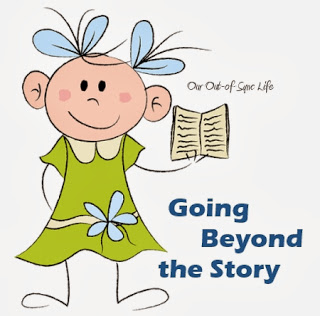 |
| source |
A few days ago, I was reading the story Green Eggs and Ham to Little Man. It is a childhood book that is referenced in movies, sitcoms, jokes, and general conversation because of its classic story line. Many can quote pieces from this book.
Do you like green eggs and ham?
I do not like them, Sam-I-am.
And because of the popularity of this book, I have included it in the 3 Year Book of the Week Collection.
Prior to our six year stint in therapy, I would have read the story from cover to cover many times to my children. Thinking I did a great job, we would have moved on to more books. But having Bubs in therapy has taught me to pull out of the book more than the story. To make the story more than just words.
Using Green Eggs and Ham as our example, let me show you how we work on the unspoken social language. In particular, we work on facial expression and pragmatics.
Let’s pause for a moment so that I can explain these two words.
Pragmatics – The study of language in a social setting. Think communication. Just as children struggle with emotions, many children struggle with expressing themselves and understanding what is said to them. While some children learn by example, others must be taught how to handle various situations that arise.
Facial Expressions – While some children have no trouble, many children struggle understanding facial expressions and emotions. This is especially true of children who fall under the autism umbrella and those with sensory processing disorder. Now I am learning that this also is a struggle with kiddos who have Traumatic Brain Injury.
Not understanding social language is why Bubs doesn’t get the “mommy look.” He can’t read my face and understand how I am feeling.
If you have a copy of Green Eggs and Ham, grab it. I am going take you to a few pages and help you understand how we “read” books in our home.
First, we look at the cover and read the title and author (and illustrator). Again we read the information on the title page. (I think it is important for children to learn the names of authors as well as the titles.)
Turning to the first page of the story (page 3), we see Sam standing on the back of a yellow dog…something. (If you don’t own the book, you can also Look inside the book on Amazon.) He is holding a sign saying “I am Sam”. Of course, we would read these simple words. But then we discuss what the illustrator is telling us. How are the characters feeling? What is situation is the illustrator trying to explain to us?
Using this same page we see the curved lines showing us that the “animal” and Sam came around the corner – and probably came pretty quickly with the amount of curved lines. We could also talk about Sam standing on the animal (which would be a whole topic in itself).
Next is the characters’ expressions. Two questions:
- How is the character feeling?
- And this one is so important for those kiddos who struggle with the social language – How do you know?
How is Sam feeling and why?
- happy – he has a smile on his face
- smug – his eyes are closed and his eyebrows are up
- introducing himself – his eyes are closed, has a sign, holding his hat up
You may not agree with this assessment. The child may believe something completely different. As you and the child learn the story, you may change your opinion of the character. And that is okay. The point is to begin looking and understanding the unspoken social language. Next we would evaluate the animal.
Let’s look at the next set of pages.
Next we meet a new character. From looking at his face and what he is doing, how does he feel?
- stunned, surprised – eyes large, eye brows up
- looking at a newspaper, sitting in a chair – relaxing, probably not expecting an animal and Sam to go rushing by
- only half of the animal is showing – quickly moving, didn’t acknowledge new character
Page six, the character looks a little frightened.
- The animal is now different – looks and color
- Sam has a new sign and is waving. (waving is saying hi)
- The characters’ hat shows movement – Does this mean he whipped his head around quickly?
- His one foot is off the ground showing he may be afraid he will get run over.
That is a lot to think about and we are only five pages into the book!
No longer is the book a bunch of words and pictures. Suddenly the child begins to feel with the characters and understand their point of view. Great for any child to be exposed to.
Imperative for children who struggle in this area.
Tomorrow, I will share with you a book that combines pragmatics and Fall!

That is wonderful. Thank you. I always try to over-exaggerate the emotions when I'm reading too, but that is purely for the silliness aspect. 🙂
Over-exaggerating the emotions is great! Adds laughter, fun, and learning.